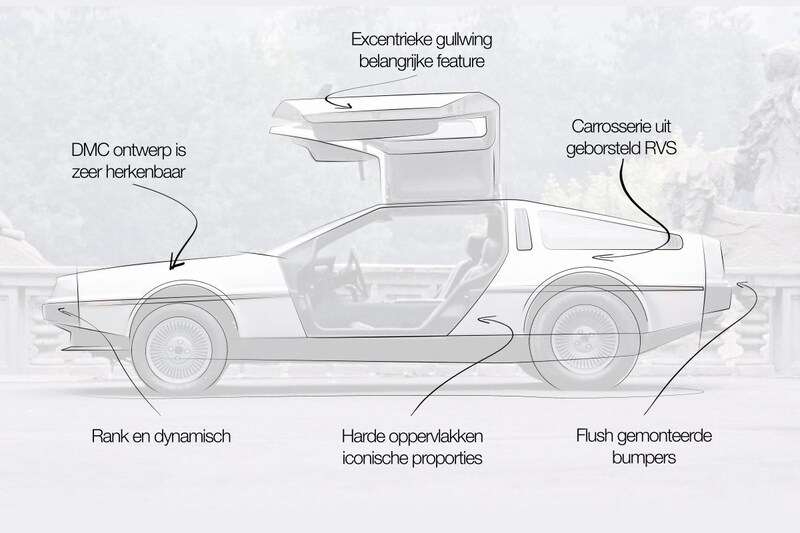Niels van Roij goes Back to the Future

Although car designers normally look to the future, Niels van Roij will look back in the coming weeks. Today he goes all the way Back to the future, with an ambitious project for a two-seater Coupé with gull-wing doors. The DeLorean DMC!
In 1974, American John Z. DeLorean, then ex-vice president of General Motors, walked into the Italian car design house Italdesign. The start of the collaboration with DeLorean Motor Company begins that day. Together with Giorgetto Giugiaro – master car designer and responsible for hundreds of car designs – a program is being created for a two-seater sports car with the rear engine.
First conceived as an exclusive sports car, especially for the American market, a key part of John’s briefing to Giugiaro was that the new design had to be made not only highly recognizable, but also economical. After all, there was an oil crisis.
For this reason, the body of the DMC was made of extremely light brushed stainless steel. The fact that this body was still unpainted not only saved a lot of costs in production, but also kilos in weight. The gullwing doors, still an unusual choice today, had only previously been seen on the 1954 Mercedes 300SL in 1974. For John DeLorean, the eccentric gullwing design was an important feature to apply to his car. Again to make it even more radical and extra recognizable.
Italdesign Giugiaro designed unique bodies for Alfa Romeo, Aston Martin, Audi, BMW and even Ferrari, Lamborghini, Lotus and Maserati. However, it was two prototypes from very ordinary car makers that particularly inspired John DeLorean. In ’74 he saw the remarkable designs of the Lancia Medici and Hyundai Pony on the Italdesign stand at the Turin Motor Show. Both cars have a typical 1980s shape spectrum, with particularly beautiful details. They led John to choose Giugiaro for the design of his new car.
The Medici I, now on display in our own Louwman Museum:
And the Hyundai Pony Concept:
The design of both the Pony and the Medici is eccentric. The design work is typically 70s, with sleek surfaces and iconic sharp proportions. Both models have impactful decisions in terms of both form and material. They are hard and formal, with two-dimensional solutions that are almost architecturally drawn. Completely in line with the new possibilities offered by production techniques at the time.
Despite its strict, hard-lined design theme, the DMC DeLorean looks sympathetic and, as a sculpture, it is also exceptionally well executed. Slender and dynamic, without having to use an upward shoulder line or wild surfacing shapes – as we often see nowadays.
The DeLorean is a stainless steel monolith: ultimately dimensionally stable, extremely precise and exceptionally innovative in its time. This was due to the gull-wing doors and naked bodywork, but also its flush-mounted bumpers – one of John’s many requirements that made the car progressive. Through his legendary styling, John DeLorean sent an unmistakably strong visual signal to the world about his way of building cars. Delorean could have become very special as a car brand, provided the story would not have ended with a suitcase full of cocaine and the FBI …
– Thanks for information from Autoweek.nl














